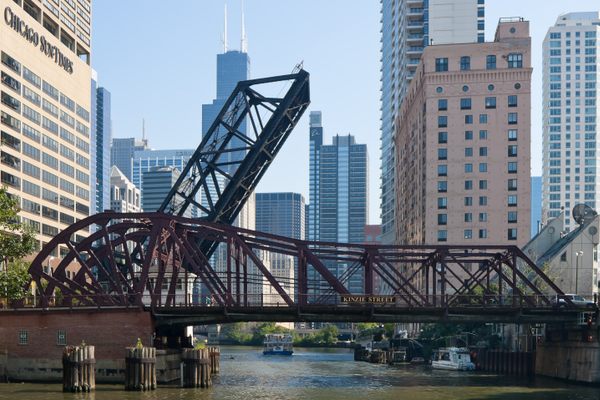AO Edited
Ichijo Modoribashi Bridge
The “bridge of return” is haunted by a myriad of legends, from ghosts to demons to nuptial superstitions.
Modoribashi, the “bridge of return,” is built over the narrow Hori River, crossing over to the Seimeichō district—once home to Abe no Seimei, a spiritual advisor to the Emperor who is said to have been the most powerful sorcerer in Japanese history.
The original Modoribashi Bridge was built in 794 when Kyoto became the imperial capital of Japan, and still stands on its site despite countless reconstructions.
The name of the bridge derives from a medieval legend: when Confucian scholar Miyoshi Kiyotsura died in 918, his son Jōzō came to Ichijo in great haste from the mountains of Kumano, where he was training to be a monk, just as the funeral parade was crossing the bridge. Jōzō clung to his father’s coffin and prayed, and with a roar of thunder, Kiyotsura miraculously came back to life for a moment, for one last hug.
According to an episode in the famous epic The Tale of the Heike, the samurai Watanabe no Tsuna was crossing this bridge late at night when he was asked by a beautiful woman for a ride. Reluctantly complying, he soon found out that she was a demoness, and cut off her arm in order to escape. The severed arm was kept in Tsuna’s estate but is lost today, reportedly reclaimed by the monster’s mother at some point.
The 10th century was also the golden era of Onmyōdō—an ancient system of astrology and yinyang-based sorcery—mastered by Abe no Seimei. In later folklore, Seimei is believed to have kept a number of demons and lesser deities called shikigami at his service, including the Twelve Heavenly Generals, who lived under Modoribashi after Seimei’s wife kicked them out.
In the Warring States period, the bridge was often used by the feudal tyrant Toyotomi Hideyoshi for public punishments. Most notably, he (allegedly) forced Sen no Rikyū, the famed master of tea ceremony, to commit seppuku and then decapitated his corpse, putting the head on a pike.
Modoribashi Bridge is also the site where Hideyoshi cut off the earlobes of the 26 Martyrs of Japan, before sending them off to Nagasaki for what would be remembered as the largest mass crucifixion in Japanese history. It was meant to be a warning shot, as part of Hideyoshi’s campaign against Christianity.
Because of its name, more or less, the bridge has spawned many superstitions over the centuries. One of them, which persists to this day to some extent, has it that newlyweds should not cross it in fear of divorcing (and returning to their parents), while draftees during the Pacific War were encouraged to—so that they could return home safely.
The Modoribashi bridge that stands over the Hori River today is a reconstruction from 1995, but the prior bridge can be still found in front of Seimei Shrine, beside which sits a stone statue of one of the sorcerer’s familiars.
Know Before You Go
The current bridge is a little more than 10 minutes away from Imadegawa Station, which can be reached on Karasuma Line from Kyoto Station, another 10 minutes away. From the bridge, Seimei Shrine is only a short walk away.
























Follow us on Twitter to get the latest on the world's hidden wonders.
Like us on Facebook to get the latest on the world's hidden wonders.
Follow us on Twitter Like us on Facebook